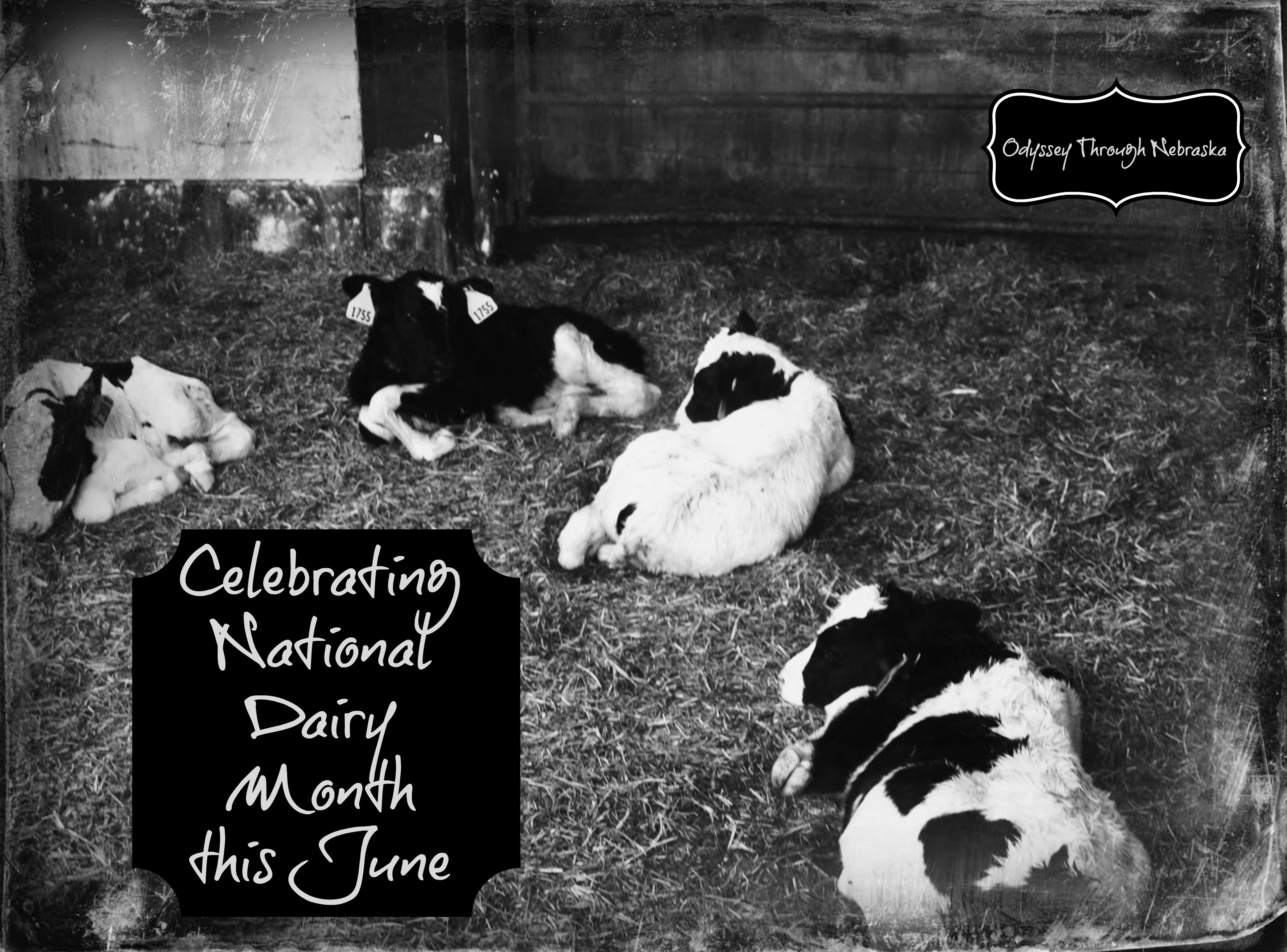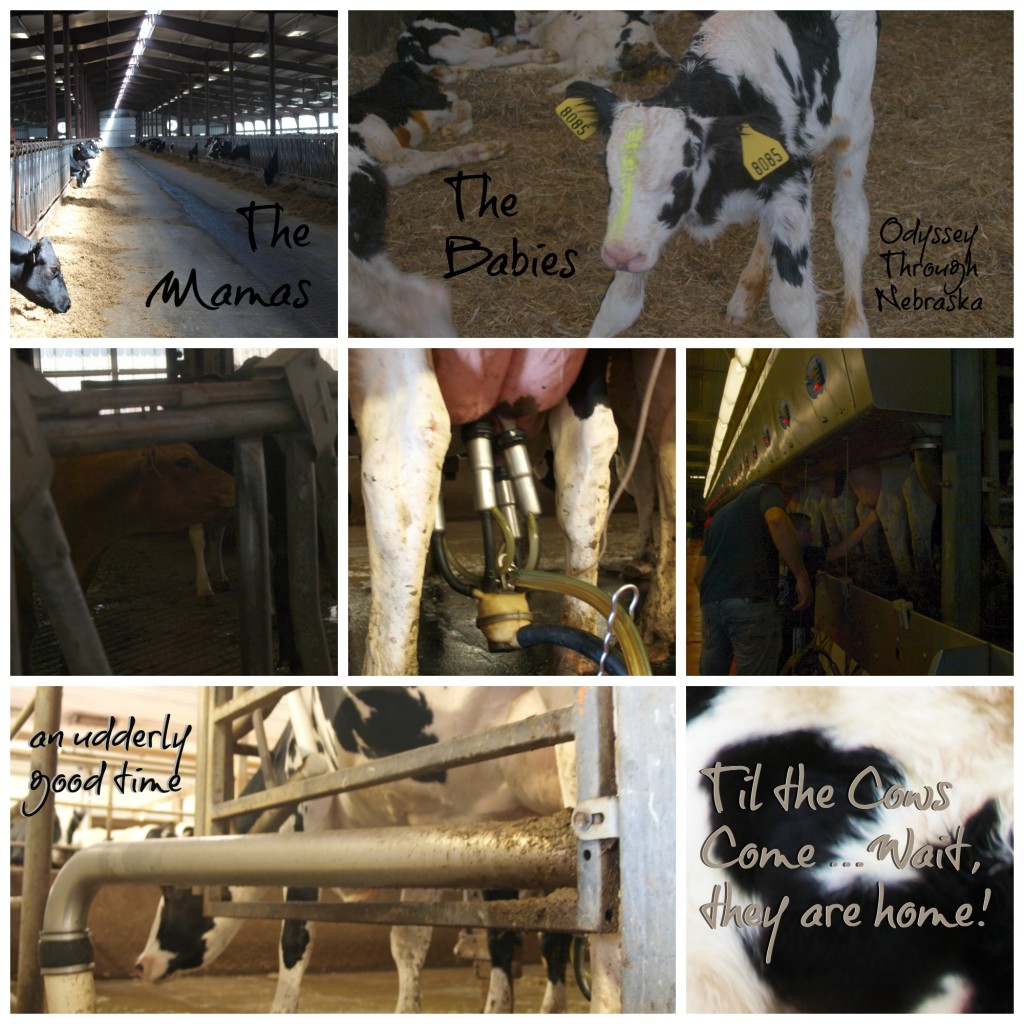Did you know that June is National Dairy Month? (A great excuse to enjoy ice cream during these hot days!) Recently I had the opportunity to tour one of the largest dairy forms in Nebraska, and I learned that what I grew up hearing/reading about dairy farms is sometimes different than reality.
Myth # 1: Cows are happier roaming free about the countryside pastures rather than in confining barns.
Fact: If operated correctly, larger barns can actually be better for dairy cows for several reasons.
- Temperature consistency
- Protection from bugs. Especially flies.
- Cows like routine – bigger set-ups allow for that.
- Black floors with contrasting white walls encourage cleanliness.
- The food production environment requires sanitation
- Milk is tested. A dirty facility would not pass inspection.
- While straw is used for forage, most of the cows actually bed on sand which is more sanitary and actually assists with the cleaning process.
- Wipe off cow.
- Use iodine to disinfect.
- Hand milking to start
- Visually check the milk quality.
- Simulate cow to start production.
- Wipe off iodine.
- Attach machine.
- Watch machine – once flow rate is below 2 pounds, stop milking.
- Retract machine.
- Post dip in iodine.
- Add glycerine protectant which helps avoid scabs and infection.
- Make sure skin is dry to avoid infection.
- Each cow produces about 10 gallons per day.
- This dairy had 2 double 45 parlor areas – 180 cows can be milked at once.
- Each cow is milked three times in 24 hours.
- 9 tankers leave the dairy with milk each day.
- Utilizing ground water and vacuum pumps, the milk is cooled from 101 to 60 degrees within seconds.
- In several more seconds, the temperature is cooled to 36 using refrigerated water.
- 1 cup – the amount that is set aside from every tanker to be tested for antibiotics and other contaminants. If this does not pass inspection, all of the milk has to go.
- 24-48 hours – the amount of time that passes between when milk leaves the dairy and reaches the store for you to purchase.
Can you tell this was a fascinating trip for me? I took a whole page of notes! Not all dairies are open to the public, but some will give group tours. Learning more about dairies reminded me of how grateful I am to the men and women who invest their time in agriculture and farming/dairy industries. By the way, just by visiting the dairy, I learned not to trust the media hype that we must buy organic milk from grass fed cattle. What I discovered is that dairy farmers are diligent in their efforts to protect our food supply. Dairy is an important part of a nutritional diet. If you are also tired of the conflicting reports, learn who to listen to for advice. One person who I feel does a fabulous job of presenting a balanced approach to nutrition is my RD friend, Amber. For some great advice and recipes (including some that feature dairy), please check out her Stirlist blog. The link is below. 🙂







Leave A Comment